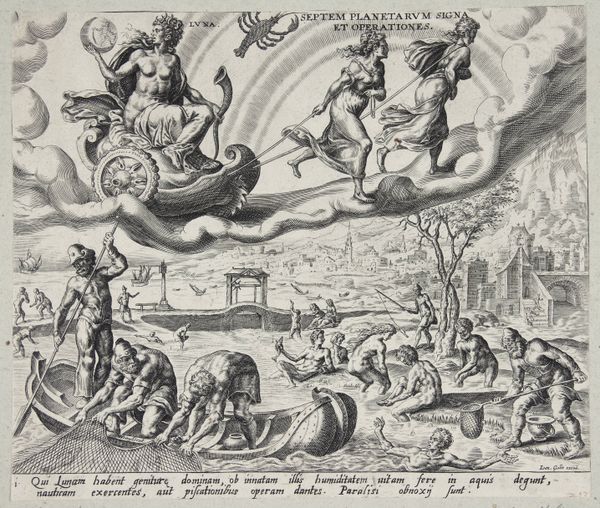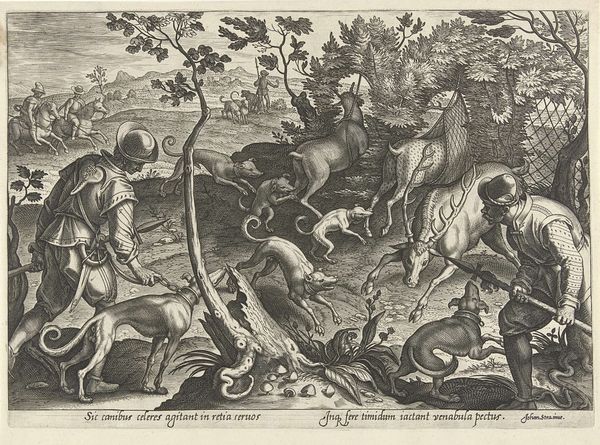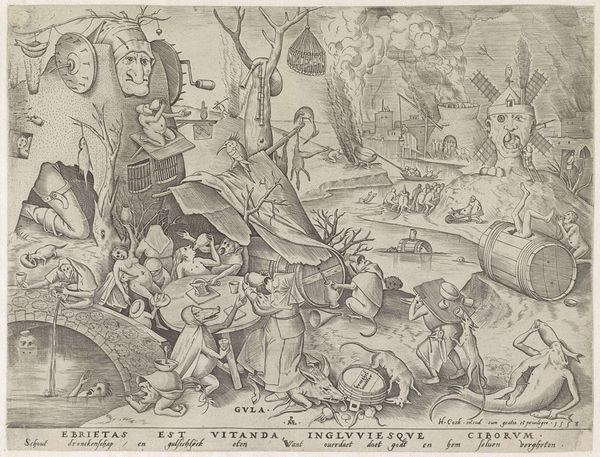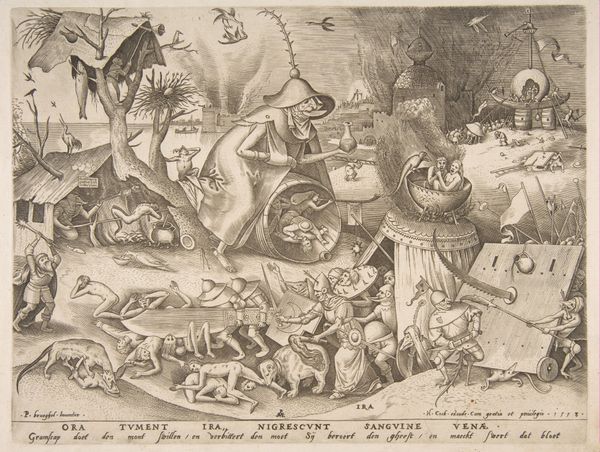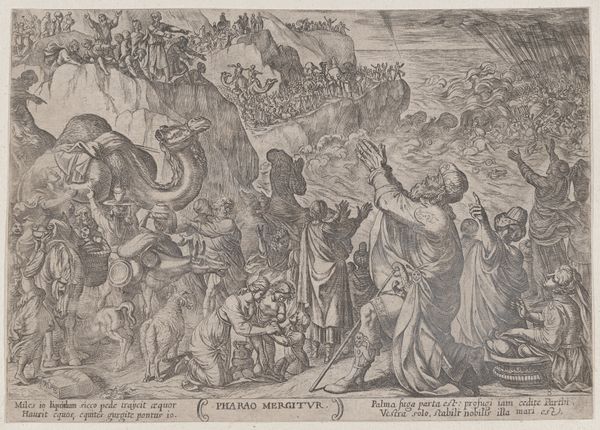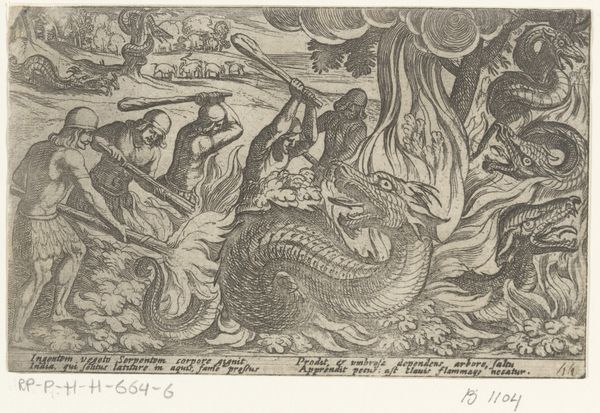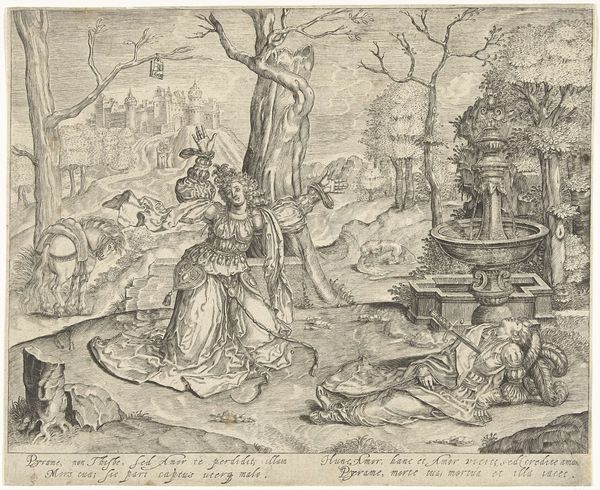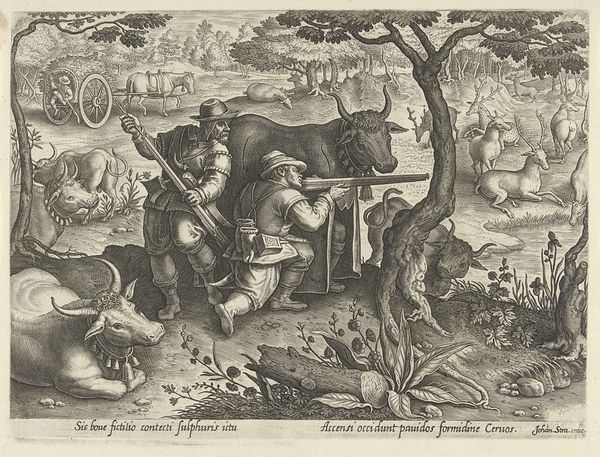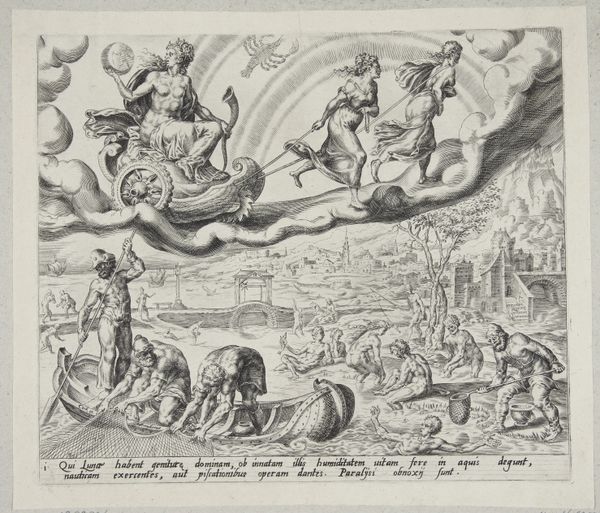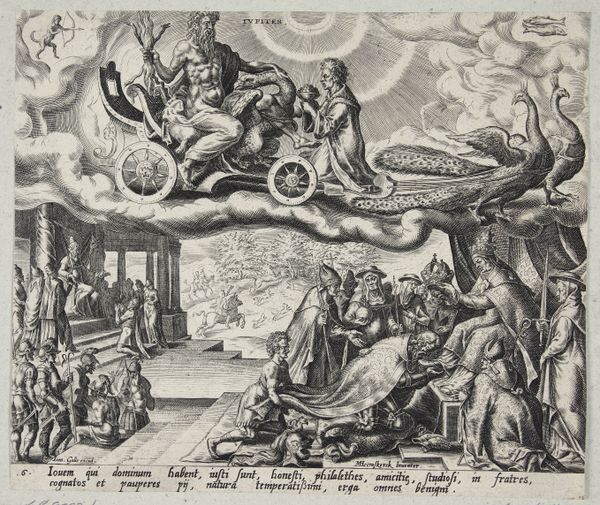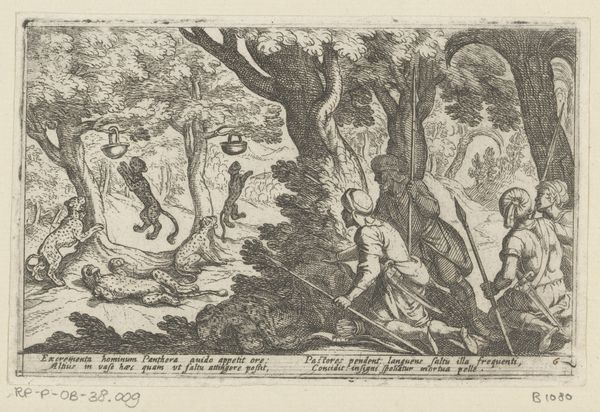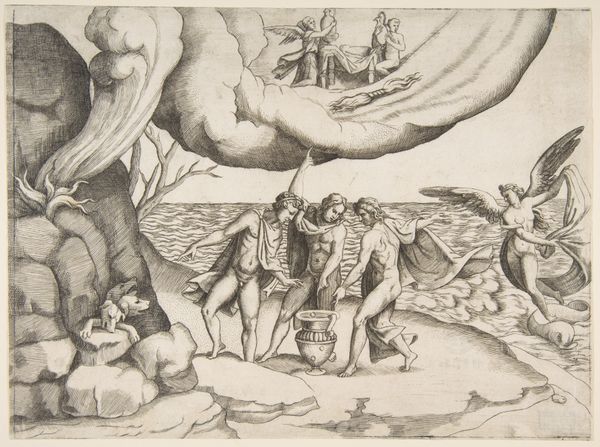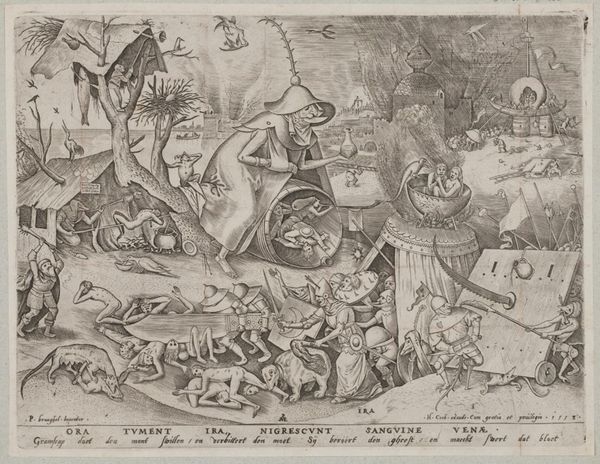
drawing, print, ink, engraving
#
drawing
#
medieval
#
narrative-art
# print
#
landscape
#
fantasy-art
#
figuration
#
exquisite-corpse
#
ink
#
history-painting
#
engraving
Dimensions: width 260 mm, height 206 mm
Copyright: Rijks Museum: Open Domain
Curator: Here we have Karel van Mallery’s engraving, "Jacht op waterslangen in India," created sometime between 1594 and 1598. What's your initial reaction? Editor: Chaos! It's a tangled landscape of figures and flora, all rendered in intense monochrome. The scene feels dense, almost claustrophobic, like a clash between brute force and primeval nature. What strikes me most is the relentless activity, so many individual lines creating texture and movement. Curator: The engraving certainly reflects a complicated history of colonialism and the exoticization of the "East." The hunters, seemingly European, are imposing themselves on this fantastical Indian landscape filled with mythical beasts and unfamiliar flora. The image operates on many levels; its figures performing a symbolic conquering. Editor: Conquering through labor, if you will. Note the crude weapons—clubs and spears. The emphasis is not on sophisticated weaponry, but on raw human effort. Even the etching itself mimics a laborious process. I'm thinking about the physicality embedded in every stage of its creation, from the drawing on the plate to its eventual consumption as a printed image. It embodies a strenuous production of power. Curator: Exactly! It raises essential questions about the social hierarchies implicit in early cartography and representation. How does Van Mallery visually establish dominance? Note the gaze of the hunters, their physical dominance over the animals. The serpentine form is especially interesting when read through a gendered lens, perhaps reflecting anxieties around the subjugation of indigenous lands and peoples. Editor: That interplay between human action and natural materiality is compelling. The ink itself becomes a medium through which both control and its inevitable limits are visualized. We see that even the conquerors are immersed in an environment that appears as perilous as it is plundered. Look at the dragons. This engraving seems to argue that human endeavors are persistently in material negotiation with their surroundings, creating an inextricable link between people and environment. Curator: I agree. Thinking about the engraving through this framework has certainly enriched my perspective, forcing a deeper interrogation of the underlying ideological structures at play. Editor: For me, examining the image in terms of its production emphasizes how interwoven its artistic decisions are with its historical realities. These dragons are not simply fantasy, but material representations of human engagement with the world, loaded with intent.
Comments
No comments
Be the first to comment and join the conversation on the ultimate creative platform.
